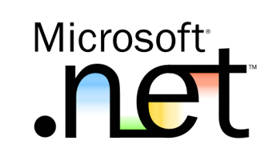Computer Science 2005
 PHP is a widely-used general-purpose scripting language that is especially suited for Web development and can be embedded into HTML.
PHP is a widely-used general-purpose scripting language that is especially suited for Web development and can be embedded into HTML.
You can also download the PHP manual from:
http://www.php.net/docs.php
 What is PEAR?
PEAR is short for "PHP Extension and Application Repository" and is pronounced just like the fruit. The purpose of PEAR is to provide:
What is PEAR?
PEAR is short for "PHP Extension and Application Repository" and is pronounced just like the fruit. The purpose of PEAR is to provide:
- A structured library of open-sourced code for PHP users
- A system for code distribution and package maintenance
- A standard style for code written in PHP, specified here
- The PHP Extension Community Library (PECL), see more below
- A web site, mailing lists and download mirrors to support the PHP/PEAR community
Download the PEAR manual from: http://www.pear.php.net/manual/
 MySQL downloads. MySQL 5 is just out and comes with some nice new features such as Triggers, Stored procedures and functions, download it and try it out!
MySQL downloads. MySQL 5 is just out and comes with some nice new features such as Triggers, Stored procedures and functions, download it and try it out!
 The Apache HTTP Server Project is a collaborative software development effort aimed at creating a robust, commercial-grade, featureful, and freely-available source code implementation of an HTTP (Web) server. The project is jointly managed by a group of volunteers located around the world, using the Internet and the Web to communicate, plan, and develop the server and its related documentation. This project is part of the Apache Software Foundation. In addition, hundreds of users have contributed ideas, code, and documentation to the project. This file is intended to briefly describe the history of the Apache HTTP Server and recognize the many contributors.
The Apache HTTP Server Project is a collaborative software development effort aimed at creating a robust, commercial-grade, featureful, and freely-available source code implementation of an HTTP (Web) server. The project is jointly managed by a group of volunteers located around the world, using the Internet and the Web to communicate, plan, and develop the server and its related documentation. This project is part of the Apache Software Foundation. In addition, hundreds of users have contributed ideas, code, and documentation to the project. This file is intended to briefly describe the history of the Apache HTTP Server and recognize the many contributors.
 Visit the Microsoft Developer Network for tutorials, webcasts, white papers and all sorts of information for developer regarding Microsoft products.
Visit the Microsoft Developer Network for tutorials, webcasts, white papers and all sorts of information for developer regarding Microsoft products.
 Get to grips with ASP.NET. Probably the best resource for getting started with ASP.NET
Get to grips with ASP.NET. Probably the best resource for getting started with ASP.NET
 An excellent resource for discussing many issues related to web development. Useful for both simple and advanced problems. Specialized forums for both .NET, Apache, MySQL and PHP, as well as
general forums for databases and server configuration.
An excellent resource for discussing many issues related to web development. Useful for both simple and advanced problems. Specialized forums for both .NET, Apache, MySQL and PHP, as well as
general forums for databases and server configuration.
The Web Application Component Toolkit is a modular patterns based framework for creating high performance web applications.
WACT assists in implementing the Model View Controller pattern and the related Domain Model, Template View, Front Controller and Application Controller patterns. For additional information on patterns in php, see enterprise patterns or http://phppatterns.com/.
The WACT framework is developed with the philosophy of continuous refactoring and unit testing. WACT encourages these activities in applications based on the framework. WACT uses Simple Test as a unit testing framework.
WACT emphasizes writing secure web applications. See Web Application Security for more information.
 PRADO is a component-based and event-driven framework for rapid Web programming in PHP 5. PRADO reconceptualizes Web application development in terms of components, events and properties instead of procedures, URLs and query parameters.
PRADO is a component-based and event-driven framework for rapid Web programming in PHP 5. PRADO reconceptualizes Web application development in terms of components, events and properties instead of procedures, URLs and query parameters.
A PRADO component is a combination of a specification file (in XML), an HTML template and a PHP class. PRADO components are combined together to form larger components or complete PRADO pages.
Developing PRADO Web applications mainly involves instantiating prebuilt and application-specific component types, configuring them by setting their properties, responding to their events by writing handler functions, and composing them into application tasks.
Note: Prado is an implementation of much of what has been done in the ASP.NET framework in PHP.
This isn't really relevent in terms of my project, but it is an incredibly useful link if you are interested in writing network enabled .NET 2005 clients which are able to interact with online web forms. This also helps in terms of posting data to REST Web Services if you want to use the POST verb, or possibly want to send binary data.


